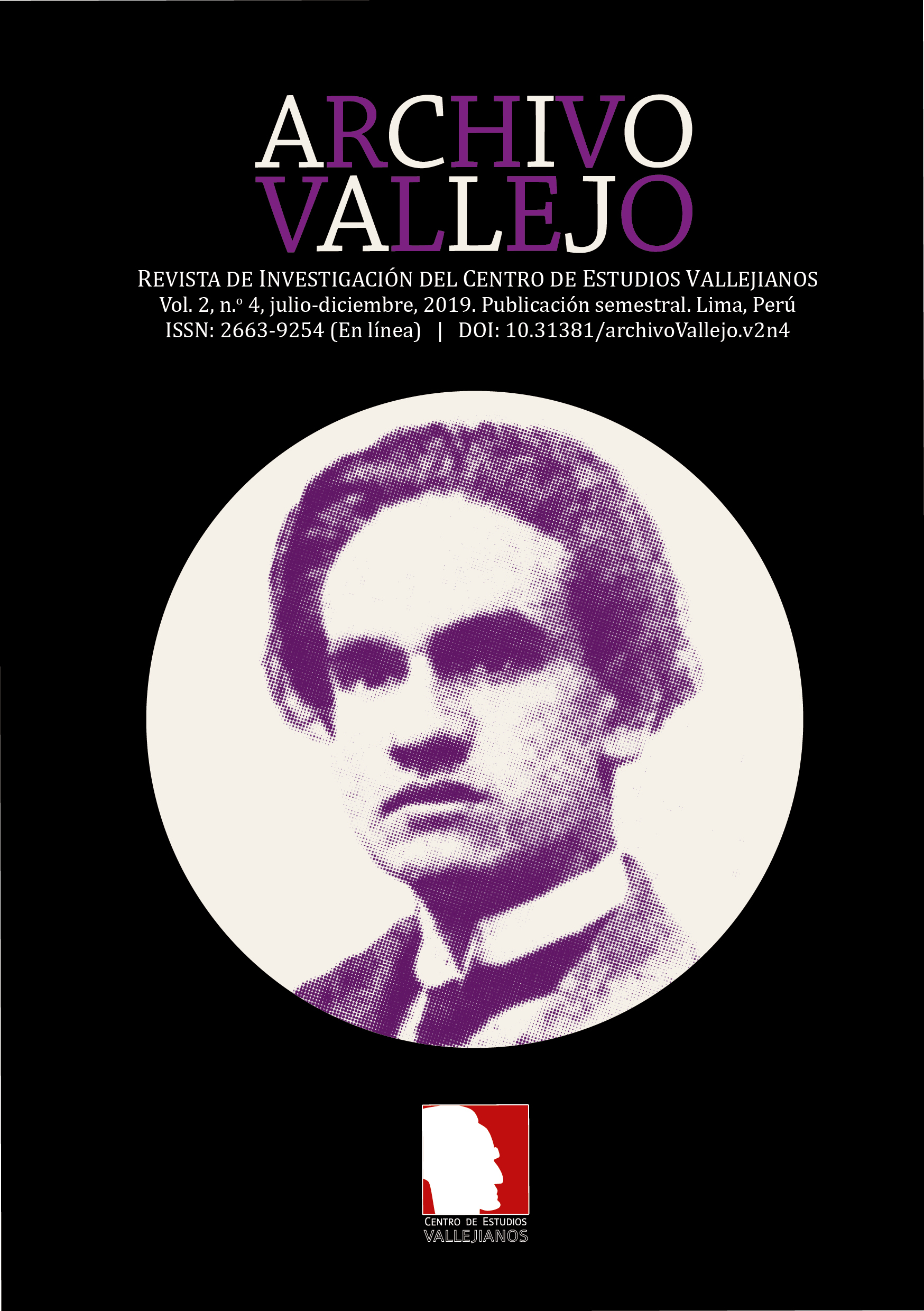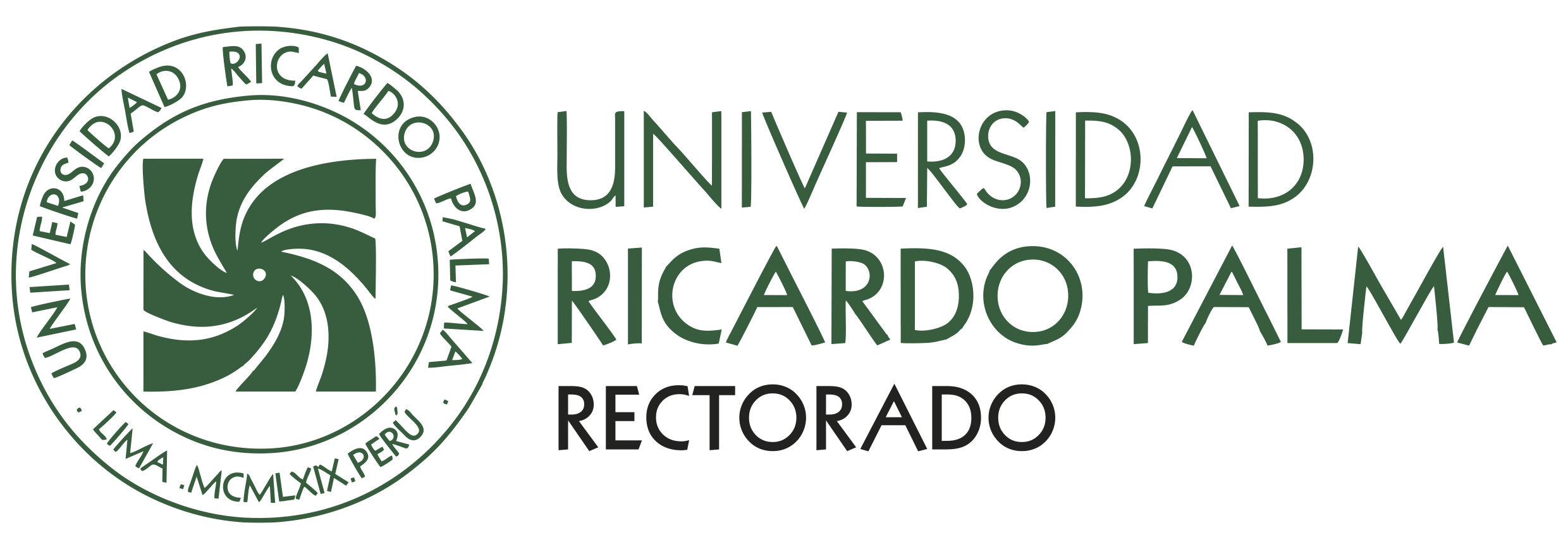«Green» Vallejo in The Black Heralds
DOI:
https://doi.org/10.31381/archivoVallejo.v2n4.5180Keywords:
César Vallejo, greenness, «green» interpretation, incest, The Black HeraldsAbstract
Running counter to the focus on «blackness» and «pessimism» that some critics emphasise in their assessment of César Vallejo’s first published collection of poems, in this essay I use an eco-critical approach in order to focus on the role played by greenness in Vallejo’s 1919 collection, The Black Heralds. I start with the early poems such as «Phosphorence» and «Vegetal Transpiration» and argue that they are important for an understanding of Vallejo’s primordial reliance on nature, as are those poems in The Black Heralds that focus on greenness. I then pass to an analysis of the ways in which Vallejo portrays his incestuous relationship with his niece via the heretical account of Christ’s sexual relationship with Mary Magdalene in poems such as «Nervy Frenzy of Anguish», «Comunion» and «September», and suggest that these reveal a «green» side to Vallejo’s poetic persona. Finally I draw on Claude Lévi-Strauss’s theory of the «cooked» and the «uncooked» and his related theory of the prohibition of incest as underpinning human culture in order to suggest that Vallejo’s poetic persona sought the sweetness of a world in which he could escape the need to communicate through the exchange of words in the same way that he refused to exchange women, and thereby, in Lévi-Strauss’s words, «vivre entre soi».
References
Coyné, André (1957).César Vallejo y su obra poética. Lima: Letras Peruanas.
Espejo Asturrizaga, Juan (1955). César Vallejo: itinerario del hombre, 1892-1923. Lima: Juan Mejía Baca.
García Lorca, Federico (1976). Romancero gitano. Poema del cante jondo. Madrid: Espasa-Calpe.
González-Cruz, luis F. (1975). Pablo Neruda, César Vallejo y Federico García Lorca: microcosmos poéticos, estudios de interpretación crítica. Nueva York: Las Américas.
Gutiérrez Girardot, Rafael (1971). «La “muerte de Dios”». En Flores, Ángel (ed.). Aproximaciones a César Vallejo. Tomo I. Nueva York: Las Américas, 335-352.
Hart, Stephen M. (1988). «War within a War: Poetry and the Spanish Civil War». ¡No pasarán! Art, Literature amd the Spanish Civil War. Londres: Támesis, 106-122.
Hart, Stephen M. (1998). «Vallejo’s “Other”: A Note on Versions of Otherness in the Work of César Vallejo (1892-1938)». Modern Language Review, 93, 710-723.
Hart, Stephen M. (2014). César Vallejo. Una biografía literaria. Traducción de Nadia Stagnaro.Lima: Cátedra Vallejo.
Harvard, Robert G. (1972). «The Symbolic Ambivalence of “Green” in García Lorca and Dylan Thomas». Modern Language Review, 67, 4, 810-819.
Lévi-Strauss, Claude (2009). Les structures élémentaires de la parenté. Berlín: De Gruyter Mouton.
Real Academia española (2014). Diccionario de la lengua española. Vigésimo tercera edición. Madrid: Espasa Libros.
Schneider, luis Mario (1971). «Comienzos literarios de Vallejo». En Flores, Ángel. (ed.). Aproximaciones a César Vallejo. Tomo I. Nueva York: Las Américas, 133-181.
ValleJo, César (1997). Poesía completa. Edición de Ricardo Silva-Santisteban. Lima: Pontificia Universidad Católica del Perú.
Downloads
Published
How to Cite
Issue
Section
License
Copyright (c) 2019 Stephen M. Hart

This work is licensed under a Creative Commons Attribution 4.0 International License.
Los contenidos publicados en la revista están bajo una licencia CC-BY 4.0, la cual permite:
- Compartir, copiar y redistribuir el material en cualquier medio o formato.
- Adaptar, remezclar, transformar y construir a partir del material para cualquier propósito, incluso comercialmente.
Bajo los siguientes términos:
- Atribución. Usted debe dar crédito de manera adecuada, brindar un enlace a la licencia, e indicar si se han realizado cambios. Puede hacerlo en cualquier forma razonable, pero no de forma tal que sugiera que usted o su uso tienen el apoyo de la licenciante.















